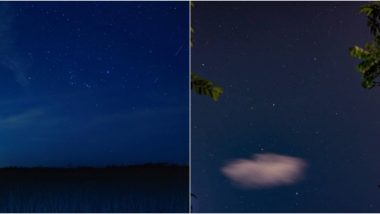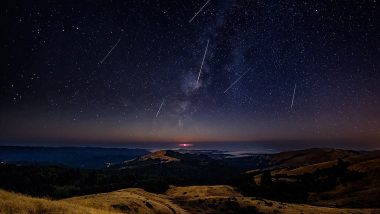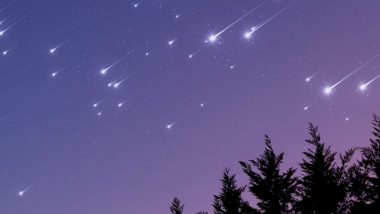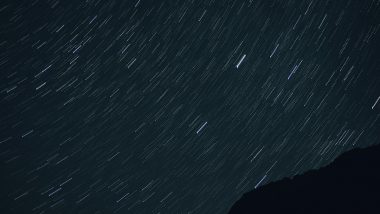The first meteor shower of 2021 happened and it was a sight to watch. Quadrantid meteor shower brightened the night sky in the northern hemisphere. NASA said that stargazers had a golden chance to witness the meteor shower in the new year as "one of the best annual meteor showers" is set to peak on January 2-3, 2021. Meanwhile, people can be taken to social media platforms sharing pictures of the meteor shower. Geminid Meteor Shower 2020 Photos: As Geminids Peak, Here's How You Can Watch and Wish Upon Shooting Stars Tonight.
According to NASA, the Quadrantids peak during the first week of January and will remain active for around 6 hours, but other meteor showers used to last for an average of two days. During this time, around 200 Quadrantid meteors can be seen per hour if the sky is clear. NASA said, "Quadrantids are also known for their bright fireball meteors. Fireballs are larger explosions of light and colour that can persist longer than an average meteor streak. This is due to the fact that fireballs originate from larger particles of material."
Quadrantid Meteor Shower in the Night Sky
View this post on Instagram
The Great Show Up There!
View this post on Instagram
Isn't it Beautiful?
Tonight the #QuadrantidsMeteorShower is a happening! Probably wont get a good look at a bunch of meteors cause of the full moon and the usual clouds of #Seattle, but if you happen to be somewhere that gets a good angle please snap a pic for me 😁
-
-
-#terragaynes #astronomy pic.twitter.com/FjDBekiDxa
— Terra Gaynes (@TerraGaynes) January 2, 2021
Shining in the Night Sky!
View this post on Instagram
Beautiful!
View this post on Instagram
When Light Shower Begins!
View this post on Instagram
Quadrantids are comet particles or broken asteroids. When meteoroids enter the Earth's atmosphere at high speed, they burn up and are meteors or "shooting stars." NASA said that the Quadrantids originate from an asteroid known as 2003 EH1. This meteor shower was first seen in 1825.
NASA explained, "An alternative name for the Quadrantids is the Bootids since the meteors appear to radiate from the modern constellation of Bootes. Even though the constellation may no longer be recognized, it was considered a constellation long enough to give the meteor shower its name."
(The above story first appeared on LatestLY on Jan 04, 2021 05:25 PM IST. For more news and updates on politics, world, sports, entertainment and lifestyle, log on to our website latestly.com).













 Quickly
Quickly





















